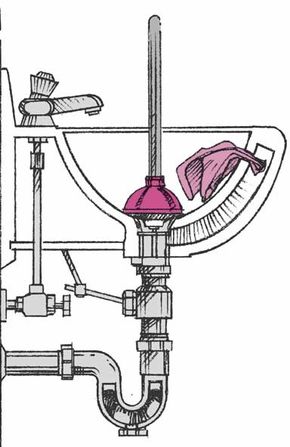Clogged Bathroom Drains
In many homes, the bathroom sink doubles as a dressing table, and family members shampoo in the shower. Hair and soap go down bathroom drains day and night, and the cruddy mess can quickly jam up the plumbing. Regular clearing of the traps saves your plumbing, and it also cuts down on cleaning time — water that flows out of the tub quickly doesn't allow dirt to settle on these surfaces.
If clearing the trap doesn't clear the drain, you'll have to take stronger measures. First plunge the drain. Before you use the plunger in the bathroom basin, plug the overflow opening. This allows the plunger to exercise its maximum suction effect on the clogged drain.
Advertisement
If plunging does not open the drain, use a chemical drain opener. Handle these products with special care because they are caustic and harmful to the skin and eyes. Use them in a well-ventilated area, and follow the manufacturer's instructions. Chemical drain openers will damage porcelain enamel, and you should not allow them to remain on the surface of your fixtures for any length of time.
If the first type of chemical drain opener you use does not work, do not use a different chemical drain cleaner unless you are certain the initial cleaner has totally flushed away. Never use a plunger or a pressurized drain opener after using a chemical cleaner; it may cause dangerous chemicals to splash on you. Also, be sure to tell your plumber what you have put into the drain before he or she starts to work. The combination of ammonia and other household cleaners with chemical drain openers produces hazardous gases.
Hopefully, you won't have to deal with clogged drains very often. Keeping your bathroom clean is another matter, though. In a week or so, you'll have to start the cleaning process all over again — but until then, enjoy.
